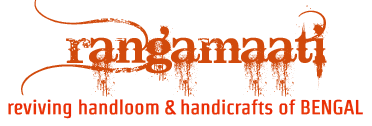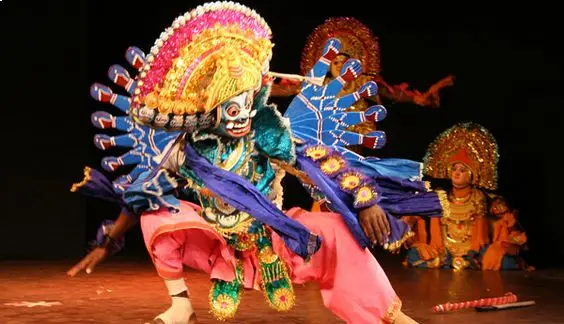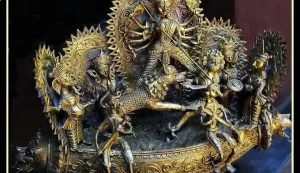
1. Bera Utsav – Murshidabad
The annual festival is celebrated on the last Thursday of the Bengali month of Bhadra (mid-September). It is held at Lalbagh on the banks of river Bhagirathi near the palace of the Nawabs. Fireworks of various size and color add to the gaiety of the festival.
This festival also plays a pivotal role in boosting Murshidabad tourism as large number of tourists come to the place in order to witness this event. The festival also features a number of dance and music performances.
2. Tibetan New Year (Loshar) – Darjeeling
Festivals and Events in Darjeeling are reflections of the diverse Indian culture and tradition that has developed through ages. Since it is the homeland of many different religions like Hinduism, Buddhism and to an extent Christianity at the same time, many festivals take place throughout the year.
The Tibetans who constitute a major part of the population celebrate the Loshar Festival in Darjeeling with great pomp and festivity. The end of January marks the end of the Tibetan Year. To avert the negativity of the old year, most of the monasteries in the area have Cham (Tibetan Dance) during this time of the year. Loshar Festival in Darjeeling which is basically the new year of the Tibetans usually falls in the month of February. It is an important festival in the Tibetan calendar year and its celebration continues for a week. It is celebrated with great enthusiasm and spirit by the youthful Tibetans. The youth take to the streets performing the traditional Yak dance dressed in multi-colored clothes. They walk down the streets singing and dancing with sacred folk lure that makes the atmosphere electrifying.
3. Orange Festival – Darjeeling
To promote the Samsing-Jaldhaka area in the foothills of the Bhutan Himalaya under Darjeeling Hills as a major orange growing landscape within the pristine nature, Orange Festival takes place every year. This festival is held mainly to promote community based tourism, ecological conservation, Indo-Bhutan friendship and peace.
4. Rash Yatra Festival – Cooch Bihar
On the occasion of Rash Puja the traditional Rash Yatra Festival along with Rash Mela is held in Cooch Behar which is among the biggest festivals of North Bengal. This festival is held in the Madanmohan Temple situated in the heart of the Cooch Behar town. Constructed by Maharaja Nripendra Narayan during 1885 to 1889. The deities include Lord “Madan Mohan” , “Ma Kali” , “Ma Tara” and “Ma Bhavani”.
5. Jalpesh Festival – Jalpaiguri
Every year in the Hindu calendar, the month of srawan (15 July-15 August) thousands of devotees throng the Jalpesh Temple and a huge fair is held for a month.
Devotees collect water in vessels from the river Teesta after offering puja and walk barefoot towards the temple, which is 15 km from the river.
6. Kali Puja Festival at Devi Choudhurani Temple – Jalpaiguri
Some legend has that Devi Choudhurani the bandit queen of the famous ‘Sanyasi Movement’ period in the 19th century had established the Kali temple near Gosala. The Kali puja is now organised by a committee formed for the Kali puja at Devi Chowdhurani Kali Mandir of Jalpaiguri. The puja is a major attraction for all in the region and hundreds flock to worship the goddess at this temple. As the myth goes, Devi Choudhurani used to distribute goods looted from the rich among the poor irrespective of caste or community. In keeping with the spirit, people cutting across all community attend the Kali puja here to pay their respect and seek blessings.
7. Ramkeli Mela – Malda
The week-long fair (mela) of Ramkeli takes place around the last days of the Bengali lunar month of Jyaistha (usually the height of Summer) in a small village right outside the still impressive ruined gates and walls of the ancient Bengal capital of Gaur .This is located adjacent to the now bustling town of Malda in northern West Bengal.
It is said that the great saint of Gaudiya Vaishnavism, Chaitanya Mahaprabhu, (1486-1534), met and converted two of his principle disciples, the brothers Rup and Sanatan Goswami , who were important courtiers of the Muslim Sultan of Gaur, in Ramkeli. The Fair marks that occasion. This Fair is a great gathering place for singers of the Bengali Kirtan style of Vaishnavite devotional music. Malda is the heart of an important mango growing region and June is when the fruit starts being harvested. The Fair has considerable local agricultural and economic importance.
8. Bishnupur Mela- Bishnupur
The Poush Mela also known as the Bishnupur Mela is held every year around the last week of December, near the Madanmohan Temple. This fair stretches over four days and people from all the nearby villages come together to celebrate the end of the agricultural season.
A recent addition is the Bishnupur Utsav, held immediately following the Mela. It is a classical music and dance festival in recognition of the ‘Bishnupur Gharana’ in music.
9. Charak Gajan Mela
Charak Gajan Melas are held in 17 to 18 places of this district. Among them, most age old is Jhareswar Charak Gajan Mela of Keshpur P.S. which was probably initiated 300 years ago. This mela continues for seven days. Other important fairs of this category are Kandore at Garbeta PS, Basanta Roy of Raskundu, Hajarlinga Shiva of Nayagram, Kedarkunda fair of Chapaleswar Shiva at Debra.
10. Tribal Festivals and Fairs – Medinipur
There are a great number of tribal deities in this district and even their festivals are very popular e.g. Karampuja, Bandhanparab(Bhimraj, Dhandevi and Ghaghra), Basini, Birinchi Thakur, Rankini, Bhairab, Banam, Jahu, Salui, Kaloray, Saharag, Kalamdadan, Banga, etc. Among these fairs one of the most popular is ‘Saraganjat Mela’ at Sarengajan near Chandrakona. To worship the Bonga deity, men and women gather here and on the 3rd day of Bengali month Magh, they start their festival with songs, dance and instruments. This fair was initiated two hundred years ago.
In the tribal village, called ‘Betjharia’ near Garbeta-Goaltore region, a fair is arranged to observe ‘Saharay Puja’ which means reverence of dwelling place(Guhapuja). In the very day of Saharay Puja, in every house, sacrificed goat is given to the ancestor and cooked meat is given to the invited guests.
Safrat festival take place in Paush Sankranti and Salui Puja is in Phalgun. The last one is very important, as by custom, a sal tree is worshipped to pay homage to the creator of the universe.
Bhairabsthan and Tribal Fair: The Bhairabsthan (abode of Bhairav) is in Bhairavdanga, a place in Odgoda, one and half mile from Jhargram-Silda route. There was a great influence of Bhairab Thakur in the surrounding places. Ruler of Silda was also a devotee of power-deity. Bhairab of Silda-Odgoda is surrounded with age-old trees and enshrined on an altar with his pitcher like image(Kalas murti).
Mahotsav Mela
In every Jaisthya month, Dantamohatsav of Gopiballavpur is held, which relates to Radhagovindjiu. A fair is held for 12 days in a large space. This fair dates back to 300 years. Vaisnav devotees of Bengal and Orissa gather here. This fair is also famous for ‘Bulbul dance’. Almost 350 stalls are installed here, where agricultural tools handicrafts and utility goods made of bamboo and cane are sold. There is enough arrangements of Kirtan, Cinema, Circus and Jatra.
Rajbari Chhata Parab and Fair
With the patronage of Jhargram Rajbari, on the Sukladadwasi of Bhadra, a straight sal tree is worshipped and planted and a chhata(umbrella) is fixed upon it. This tree is 50/60 feet in length, and revered by the Brahmins and then ‘chhata’ is spreaded upon it. This is called ‘Indradhwaj’. Apart from Jhargram, this ritual is also observed in Medinipur and Abasgarh.
11. Gandhi Mela – Medinipur
To set a movement against the British rule, Mohandas Karamchand Gandhi, the father of the nation, visited Medinipur four times.
On the first occasion, on 20th September, 1921, he inspired the people against non-cooperation, in a gathering at College-Collegiate Ground. Second time, on 4th July, 1925, at Gope Palace, next day at Charka and Khadi Exhibition, on 5th July, he met the people in Darma maidan at Contai. On 1934, at Kharagpur, and fourth time, from 25th December to 29th December, 1945, at Mahisadal and Sutahata and on 30.12.1945 at Kokra, Irinchi. He stayed at Krishna and Contai from 31.12.1946 to 02.01.1946. Swadeshi Mela was arranged in these very places, where he visited. Even today, Ektarpur, a place near Mahisadal, a mela (fair) is arranged which commences on 25th February of every year in the holy memory of Gandhiji. Thousands of Hindu and Muslims come from surrounding villages to attend this fair.
12. Gajan – PuruliaGajan is a very popular festival in Purulia. Gajan songs are sung in praise of Lord Shiva and Goddess Parvati in the Bengali month of Chaitra. Singing and dancing is an integral part of this celebration. The dancers sometimes dress up as Hara Parvati and move around the village, dancing to the accompaniment of the Dhol, Kanshi and Flute. This is also popularly called Chait Parab, Chau Parab. This is associated with such deities as Shiva, Neel and Dharmathakur.
13. Disum Sendra
Every year in the Bengali month of Baisakh, during full moon hunting festival is held at the Ayodhya Hills. This festival is like a fair which is also locally called Disum Sendra. The local tribals believe that the young boys attain adulthood during this fest. The festival is with celebrated with much gaiety. The local brew (Mahul juice) is drunk together with the beat of drums, groups of young men set out for the hunting adventure with torches in their hands
14. Dharma Thakur-er Puja O Mela
This festival is mainly held during the time of 15 April to 15 May. Dharmathakur is a Hindu god worshipped by villagers in the traditional Rarh region in the present day Indian state of West Bengal as one of their special village gods. He is represented by a shapeless stone daubed with vermillion and is normally placed under a tree or placed in the open, but sometimes enshrined in a temple. Dharmathakur is worshipped mainly by castes Bauri, Bagdi, Hari, Dom etc.
15. Tusu
Tusu is a religious festival where the village girls and women sing Tusu songs during the month of Paush, the first month of winter. Tusu songs are sung for whole night of ‘Makar Sankranti’, the last day of the month of Paush. Women exchange garlands and fry eight variety of pulses which are given as an offering to the goddess Tusu.
16. Bhadu
Bhadu Puja is observed in the Bengali month of Bhadra (mid-August-mid-September) and is a very common festival of the villagers of Purulia. People believe that worshipping Bhadu Devi enables childless women to bear children. With this belief the women sing Bhadu songs and worship.
17. Chhata Parab
Chhata Parab is celebrated in Purulia during the Bhadra sankranti (last day of the Bengali month of Bhadra). Thousands of Santhals from Purulia as well as from surrounding districts attend this fair. The fair starts with the raising of a white umbrellaon a long pole by a representative of Panchakot Royal family. Naachni dance. Pata dance are performed on this occasion.
18. Bandna Parab
This is another folk festival of Purulia. Bandna means ‘bandana’ or worship. This festival is celebrated during Kali Puja in autumn. Bandna Parab welcomes ‘Shashya Devi'(Goddess of grains) by worshipping her through different rituals.
19. Karam Parab
Karam Parab is celebrated with Jaowa ( a bamboo basket full of saplings of different crops) during the month of Bhadra (mid-August-mid-September). During this festival Jaowa is prepared by sowing seeds of these crops in the basket and when the saplings emerge, turmeric water is poured on them. During day time the baskets are kept in a dark room so that the saplings do not turn green. In the evening these baskets are kept in the open and young maidens sing and dance entwining arms around these Jaowas.
20. Raas Mela
Raas Utsav is observed to celebrate the meeting of Lord Krishna with Shri Radhika and her other companions during Agrahayan Purnima. This Utsav is celebrated in Purulia town with pomp and grandeur .
21. Bhansingh Pooja-O –Parab
There is no image of Bhansingh who is regarded as God to protect cattle, held during the Bengali month of Magh(15 January to 15 February).
22. Akhan Jatra
First day of Magh is regarded as Akhan Jatra, believed as a very auspicious day.
23. Shiva Ratri Festival – Kalna, Burdwan
It is told that Bishnu Kumari, the widow of Maharaj Tilakchand set up 109 shiva temples in 1789 after receiving divine instructions in her dream. The temples aresituated at Nawabhat which is famous for the fight of Mughals and Pathans. During Shivaratri a big fair takes place, which goes on for a week, and lots of people gather here.
24. Gajaner Mela – Tarakeswar
The principal attraction of Tarakeswar is the temple of Taraknath, an ‘atchala’ structure with a ‘natmandir’ . Close by are the shrines of Kali and Lakshmi-Narayan. Dudhpukur, a tank to the north of the Shiva temple is believed to fulfil the prayers of those taking a dip in it. Pilgrims visit the temple throughout the year, especially on Mondays. But thousands of pilgrims visit Tarakeswar on the occasions of ‘Shivaratri’ and ‘Gajan’, the former taking place in Falgun (Feb-March) while the latter lasts for five days ending on the last day of Chaitra (mid-April). The month of Sravana (mid-July to mid-August) is auspicious for Shiva when celebrations are held on each Monday.
25. Book Fair & Film Festival – Kolkata
All book lovers of Kolkata or West Bengal eagerly wait for this attractive festival in Kolkata, Kolkata Book Fair. This is a unique fair where Books are primarily for thegeneral public rather than whole-sale distributors. It is the world’s largest non-trade book fair, Asia’s largest book fair and the most attended book fair in the world. It is the world’s third largest annual conglomeration of books after the Frankfurt Book Fair and the London Book Fair.
Kolkata Film Festival (KFF) is the 2nd oldest international film festival in India, held in Kolkata. The festival is organized by West Bengal Film Centre under the West Bengal Government.
List of few other important fairs
Darjeeling – Teesta Tea & Tourism Festival is held in Darjeeling and other northern districts in November-December.
Jalpaiguri – The month-long Jalpesh Mela is organised on the occasion of Shivratri in the months of February and March at Mainaguri in the district of Jalpaiguri.
Malda – Mango and Tourism Festival is held in July in the district, famous for its mangoes.
South Dinajpur – ‘Mokha Nach’, a dance with wooden masks and folk opera ‘Halna-Halnani’ are performed during Teesta Ganga festival in February.
Bankura – Bishnupur Festival is held in temple town of Bishnupur in Bankura district between December 27 and 31.
Bardhaman – Mahishmardini Puja in Kalna is a special attraction during Autumn.
Birbhum — Kenduli Mela is held at Kenduli in Birbhum district in January, known for congregation of ‘bauls’ or wandering minstrels of Bengal. Poush Mela is organised from 7th Paush every year (month of January) at Shantiniketan, where the Visva-Bharati university founded by Rabindranath Tagore is situated. Vasanta Utsav (Spring Festival) is held at Shantiniketan in the month of March.
Purba Medinipur – Bhim Mela on 11th day of Bengali month Magha and Charak Mela (both local festivals).
Paschim Medinipur – Gajan Festival is celebrated in Chaitra Sankranti (Bengali year-ending).
Hooghly – Rathyatra of Mahesh, the second oldest chariot festival of India after that of Puri, is held in June-July.
Howrah – A special festival is held in March-April at the Ram temple very near Santragachhi Jheel, known for visit of migratory birds.
Nadia – Rash Mela is held at Shantipur and Nabadwip. Sotimar Mela at Ghoshpara Kalyani and Lalan Mela at Kadamkhali village at Asannagar are also well-known.
South 24 Parganas — Gangasagar Mela is held in mid-January in Sagar Islands (South 24 Parganas) on the Bay of Bengal on the occasion of Makar Sankranti
Among other festivals, Jhapan is a local festival for goddess Manasa celebrated in western districts of the state in mid-August while Hul Dibas is marked throughout the state in memory of martyrs of the 1885 Santhal uprising against the British.




